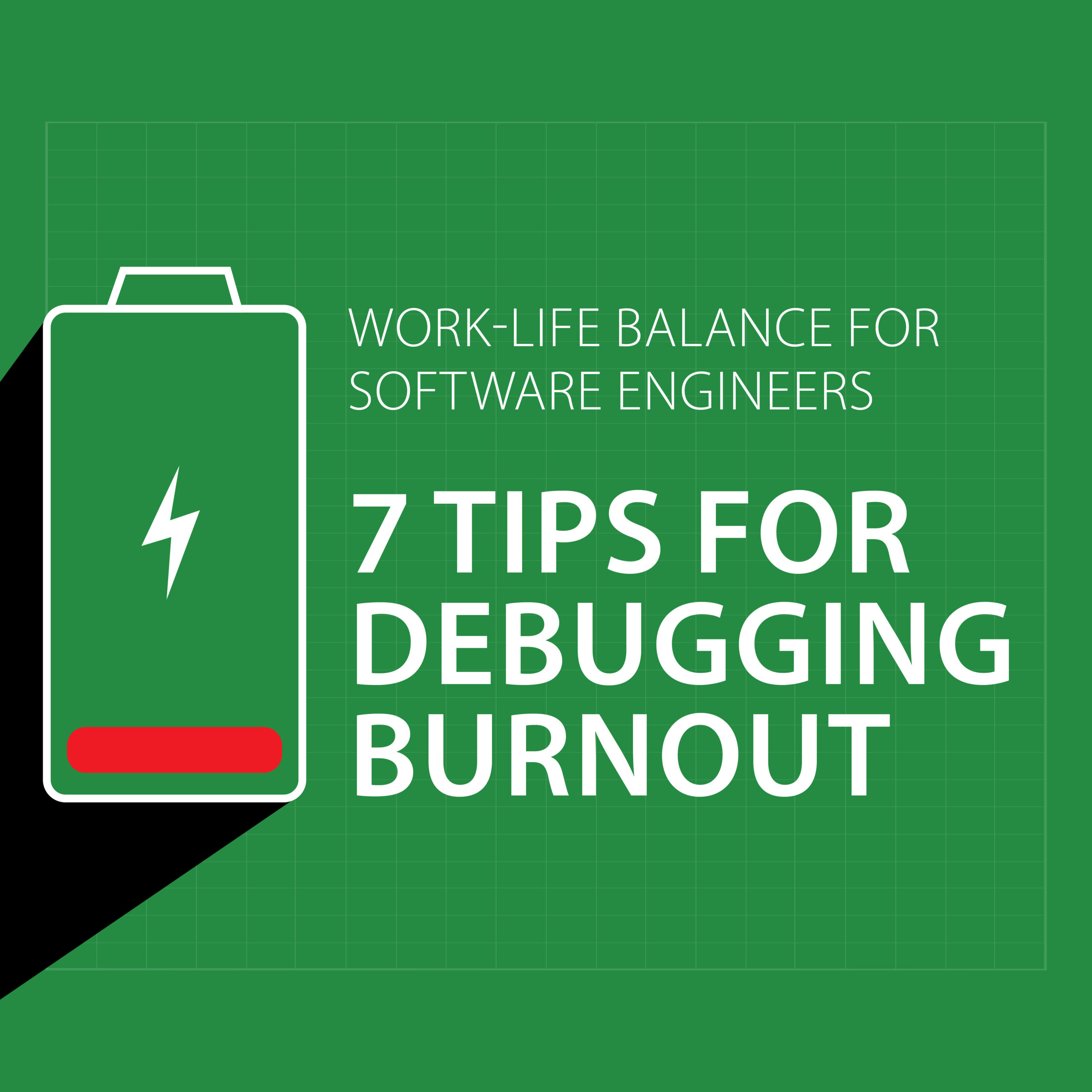Debugging Burnout
Work-Life Balance Strategies for Software Engineers

Software development requires intense concentration, problem-solving abilities, and meticulous attention to detail. When dealing with intricate problems and debugging complex code, it often demands extended periods of dedicated effort and focus.
As we strive to resolve critical issues and meet project deadlines, the boundaries between our professional and personal lives may become blurred, making it challenging to achieve a healthy work-life balance. Unresolved problems may continue to occupy our thoughts long after we've left the workplace, affecting our sleep and overall well-being. Nonetheless, it's crucial to understand that achieving work-life balance doesn't mean achieving a perfect separation; it's about finding harmony amid these challenges.
"The key to achieving work-life balance is not about time management, but about energy management." - Michael Hyatt
With that in mind, here are a few ways we encourage finding harmony even amongst a full schedule or demanding deadlines.
1 | Habit Stack Your Breaks
Use the existing 'habit' of a meeting or completing a task and add a short 5-15 min break to it. This way, after finishing the task, you'll have time for tea or coffee and stretching.
Similarly, after spending hours troubleshooting code, take a short break to chat with a colleague, play a quick team game, or simply step away from your screen.
2 | Maximise Your Productive Hours
If you're a morning person, prioritise your high-concentration work during this time and save simpler tasks for later.
Reverse the approach if you perform better in the afternoon. Utilise your energy levels and brain function to your advantage.
3 | Maximise Your Time Off: Short and Extended Breaks
Make it a priority to schedule your vacations well in advance, and consider your time off as a crucial element of your work planning.
It’s important to strategically plan both short and long vacations. Incorporating regular long weekends as well as extended breaks of a week or more helps ensure you fully recharge.
4 | Set boundaries and disconnect when not working
Software engineers often work in dynamic environments that mix work and personal life. Determine your priorities and establish boundaries around them – then communicate these boundaries with your team. They could involve family time in the evenings, a sport, or school responsibilities.
5 | Minimise context switching
Studies show it takes around 25 minutes to refocus after a context switch. Minimising frequent switches is key to productivity.
Using multiple desktops helps group subjects and avoid unrelated tabs and context switching during deep work.
6 | Use the 45-min rule and pair programming
If you can't solve a challenge in 45 minutes, ask for help. Agile methodology helps communicate progress and reduces stress.
Pair programming also mitigates key-person dependencies and promotes knowledge sharing.
7 | Take care of your health and sleep
Getting enough sleep is crucial for concentration while working. It's also important to maintain overall health by eating well, exercising regularly, and managing stress.
Prioritising health boosts energy levels, enhances focus, and improves work performance. If unsure about sleep quality, track it with a smart watch and note how you feel.
Conclusion
Finding the right balance with your personal and professional priorities is a journey, so experiment with these pointers and adapt them to suit your individual needs.
